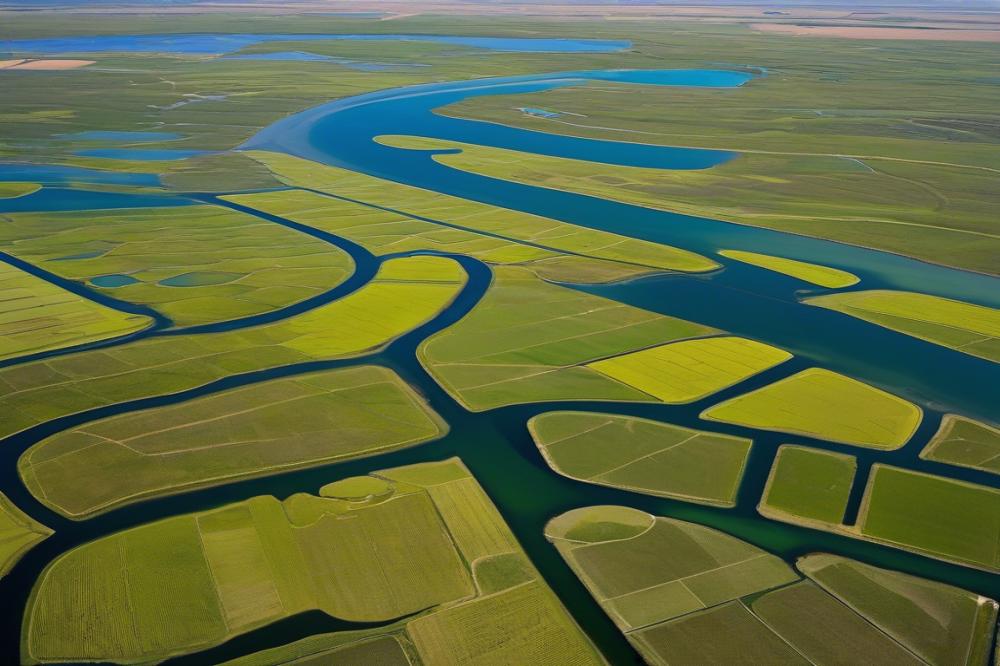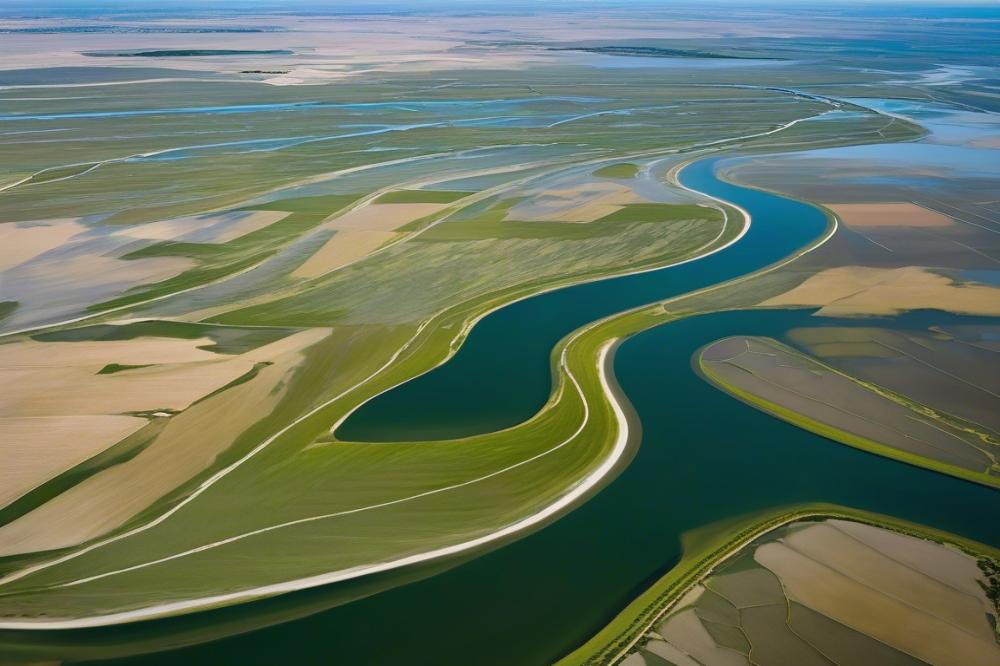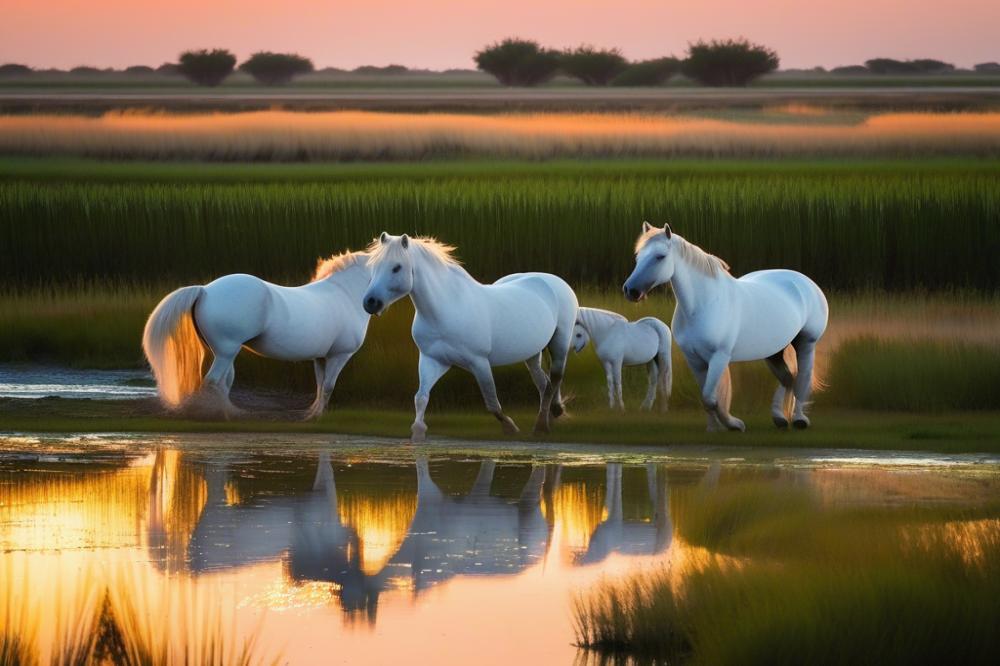The Feral Camargue horses of France: Guardians of the Wetlands
Feral horse populations around the world carry immense ecological significance. These animals play vital roles in maintaining the balance of their environments. From the wild mustangs of North America to the brumbies of Australia, feral horses have adapted to various landscapes. Their impact on grasslands and other ecosystems is notable. Grazing habits of these creatures help manage vegetation, which can influence many other species living in the same area.
Among these populations, the Camargue horses stand out as a symbol of natural beauty and resilience in France. Found roaming free in the wetlands of the Camargue region, these horses have a long and rich heritage. Their history is intertwined with the cultures of the local people, particularly the guardians known as “guardians,” who have worked alongside them for centuries. The Camargue horses are not just remarkable for their appearance but also for the roles they play in their environment.
Highlighting the importance of these wild horses brings attention to broader issues like wetlands conservation. The unique habitats the horses inhabit are crucial for many species, including numerous birds and plants. As guardians of their ecosystem, these animals help maintain the health of the wetlands. Protecting their populations is essential for preserving biodiversity in the region. By engaging with the story of the Camargue horses, we can better understand the interconnectedness of species and the importance of safeguarding our natural world.
Camargue Horses: A Brief History

The Camargue horses trace their origins to the wetlands of the Camargue region in southern France. These animals have thrived in a challenging environment shaped by marshes and salt flats. They share a deep connection to the equine heritage of France, symbolizing resilience and freedom.
Local ranchers, known as “manadiers,” play a significant role in preserving this legacy. They manage herds and keep traditional practices alive. For generations, these ranchers have nurtured a bond with the horses, relying on them for herding cattle and navigating the rugged landscapes. The cultural significance of this relationship extends beyond ranching; it shapes festivals, folklore, and even art.
Throughout history, the unique adaptations of these horses have made them remarkable guardians of their environment. Their ability to endure various weather conditions helps maintain the delicate balance of the wetlands. In return, they earn respect and admiration from those who understand their importance.
Moreover, the presence of Camargue horses adds to the allure of the region, drawing visitors and enthusiasts alike. People come not only to observe but to engage with the culture and traditions surrounding these remarkable animals. Their story is one of survival, strength, and the enduring connection between nature and humanity.
The Ecosystem of the Camargue Wetlands

The Camargue wetlands are a remarkable blend of marshes, lagoons, and salt flats. This habitat is home to a wide variety of plants and animals. Birds like flamingos, herons, and various migratory species flock to these waters. Additionally, unique flora thrives here, including salt-tolerant plants that are adapted to the brackish environment.
Within this rich ecosystem, the horses play an important part. They graze on the coarse grasses and other vegetation that grows throughout the wetlands. This grazing activity helps to keep plant growth in check, preventing overgrowth that could ravage native species. The presence of these animals allows more sunlight to reach the ground, which benefits many smaller plants.
Moreover, their movement through the marshes creates paths that other animals can use. Smaller creatures, like rabbits and various insects, benefit from this disruption. These horses naturally stir up the soil and water, which can help in spreading seeds. As a result, a greater variety of plants can take root in different areas.
By managing vegetation through grazing, they support a healthy habitat for numerous species. Birds find nesting areas amid the shorter grasses, while amphibians rely on the wetlands’ rich vegetation for cover. This interconnected web allows life to flourish in ways that you might not expect in such a challenging environment.
The Camargue horses, known for their strength and adaptability, act as guardians of this ecosystem. Their natural behaviors promote biodiversity, ensuring balance among the different life forms. Every hoofprint contributes to the health of this fragile land, showcasing how intertwined nature can be.
Conservation Efforts for Camargue Horses
The conservation status of these wild horses is a topic of concern. Their population faces several threats, including habitat loss and the effects of climate change. As wetlands shrink due to various human activities, the natural environment that supports these animals diminishes. Additionally, hunting and pollution contribute to their struggles. These challenges necessitate focused efforts to protect this magnificent breed.
Role of Nature Reserves
Nature reserves play a crucial role in the protection of the horses. These protected areas provide a safe haven where the animals can roam freely. Within the reserves, human interference is minimized, allowing the ecosystems to thrive. Conservationists work tirelessly to preserve their habitats. By maintaining the delicate balance of the wetlands, reserves help sustain not just the horses, but a variety of wildlife.
Current Conservation Initiatives
Several initiatives are currently underway to support the population. Local organizations promote awareness and educate visitors about the importance of these horses in the ecosystem. Breeding programs also aim to strengthen the genetic diversity of the herd. Teams of volunteers participate in monitoring the habitat’s health, ensuring it can support both the horses and other species. Overall, these combined efforts show promising signs of effectiveness. They highlight the united commitment to preserving these incredible creatures and their fragile environment.
Camargue Horses and Tourism
Visitors to the Camargue region are often enchanted by the sight of wild horses roaming through the marshes. Photographers especially flock to this area, eager to capture the majestic animals against the stunning natural landscape. Their allure lies not just in their beauty but also in their wild, untamed spirit. Tourists find themselves drawn to the connection between these creatures and the wetlands they inhabit.
Many activities allow people to engage with the environment while observing these animals. Horseback riding is a popular choice, offering a chance to explore the Camargue’s trails. Guided tours can provide insights into the ecosystem, wildlife, and history of the region. Birdwatching is also appealing. The wetlands are home to flamingos and other birds, making it an exciting destination for nature enthusiasts.
The economic impact of tourism is significant for local communities. Visitors contribute to businesses such as restaurants, shops, and hotels. This influx of travelers helps create jobs and stimulates the local economy. Additionally, tourism promotes conservation efforts. Awareness about the importance of protecting natural habitats grows as more people discover the beauty of the region. Local initiatives often benefit from tourist support, which helps to preserve the delicate balance of this unique ecosystem.
Animal Behavior of Camargue Horses
Social Structure and Herd Dynamics
Horses in the Camargue form tight-knit groups. A typical herd consists of a dominant mare, her offspring, and a few males. Each member plays a role, contributing to the group’s overall safety. Communication is key in these relationships. They engage in mutual grooming, which strengthens bonds. This behavior helps them maintain social harmony. Males often form alliances, especially when competing for mates. Within the herd, younger horses learn from their elders. They observe and mimic behaviors that aid their survival.
Adaptations to the Marshland Environment
Living in the marshlands requires special adaptations. The horses have developed longer legs to navigate through deep mud. Their bodies are sturdy, providing support in difficult terrain. Thick manes and tails help protect against insects. Camargue horses also possess a trait that allows them to consume saline grasses. This ability lets them thrive in an environment where food can be scarce. Additionally, these animals are highly resilient to fluctuations in temperature. Their coat insulates them during cold nights while keeping them cool in the heat.
Behavioral Traits and Their Significance in the Wild
Behavior plays a crucial role in survival. Camargue horses are known for their strong instincts. They frequently exhibit alertness to potential dangers. This vigilance keeps them safe from predators. Their ability to flee swiftly is vital for escape. Social interactions, like play fighting among young horses, develop physical skills. This playful behavior is important for growth and learning. Feeding strategies are also significant. Grazing in a group helps ensure everyone gets enough to eat. Observing each other teaches them about food sources and environmental cues.
Final Thoughts
The significance of the horses in Camargue wetlands cannot be overstated. These animals play a crucial role in maintaining the delicate balance of the ecosystem. They thrive in a landscape that is rich in biodiversity, and their presence helps sustain various plant and animal species. As wild horses roam freely, they contribute to the health of their environment.
Conservation efforts, biodiversity, and tourism are deeply interconnected. Visitors come to France not only to admire the natural beauty but also to witness the unique lifestyle of these majestic creatures. Eco-tourism offers financial support for conservation initiatives while educating the public about the importance of protecting this environment. Protecting the horses and their habitat also enhances the experience for tourists, creating a positive feedback loop.
Support for preserving these remarkable animals is essential. People must advocate for ongoing conservation programs and raise awareness about the threats they face. Engaging in local initiatives or even planning a visit can foster appreciation for the culture and ecosystem surrounding these iconic horses. Every action counts, no matter how small it might seem. By coming together, we can help protect the wetlands and all the life within them, ensuring a thriving future for both the horses and the land they inhabit.



